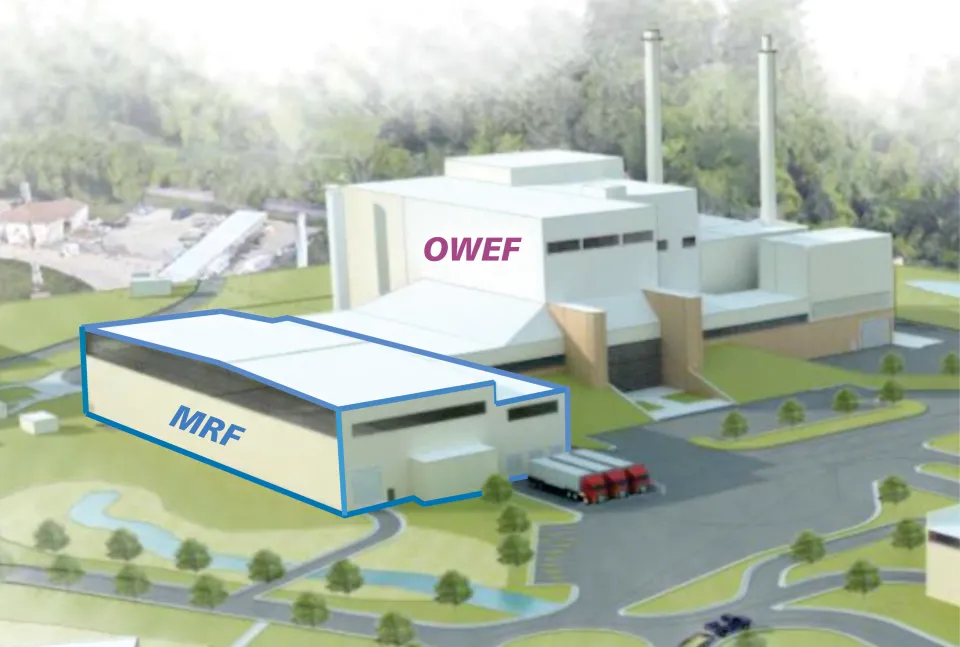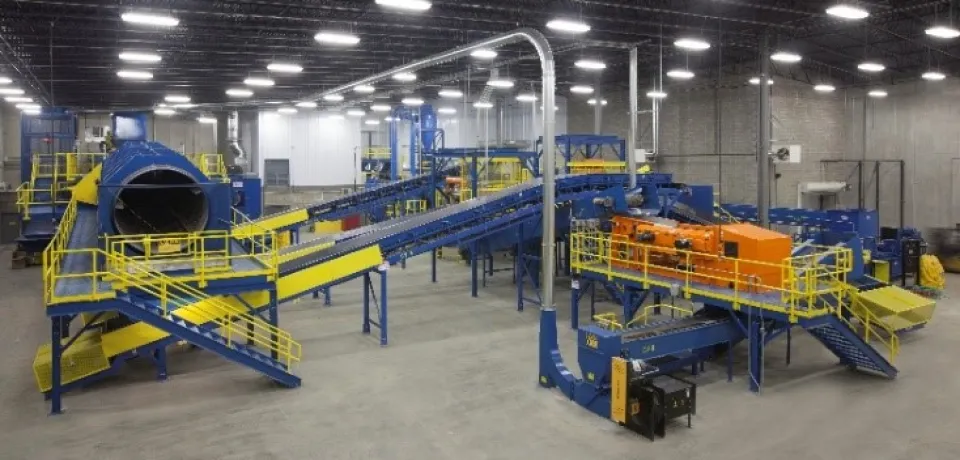Olmsted County Materials Recovery Facility (MRF)

On May 22, 2023, the Minnesota legislature approved $23 million in state capital investment dollars to help multiple projects in in Olmsted County. Of which, $10 million will go towards the construction of a new materials recovery facility (MRF) in Olmsted Olmsted County! The MRF will be built on to the existing Olmsted Waste-to-Energy Facility (OWEF).
MRFs are high-tech facilities where humans and machines work together to sort out the items we toss into our recycling carts. After sorting, recyclables are sent on to regional brokers or mills to be made into new products. Currently, household recyclables are collected at the curb, consolidated at local transfer stations, loaded onto trucks, and shipped to Twin Cities Materials Recovery Facilities (MRFs).
Objectives of the MRF are to remove recyclable and noncombustible materials from the waste stream to increase recycling and extend the life of the OWEF.

MRF benefits
A MRF will increase the amount of recyclable material recovered, improve the reliability of the OWEF, reduce operational costs at the facility, and delay a costly expansion of the OWEF.
The MRF will improve the characteristics of the municipal solid waste (MSW) being sent to the OWEF by greatly reducing metals, glass, grit and other non-combustible waste items.
The addition of fuel-cleaning technology would NOT be a substitute for correct recycling habits at the curb. We will still need residents to place the proper items in their garbage bins and recycling carts.
There is a direct correlation between the amount of waste processed at the OWEF and the amount of ash sent to the Kalmar Landfill. By removing glass, non-magnetic metal, and possibly organic material from the garbage, we slow the rate at which we fill ash cells.
Since there are currently no MRFs operating in southeastern Minnesota, a regional MRF will:
- Reduce greenhouse gas (GHG) emissions by eliminating the long transport of mixed recyclables to other areas for processing.
- Enhance the current solid waste management system for the lowest impact on the environment.
- Provide local businesses convenient access to a SE Minnesota MRF.
- Promote collaboration, and augment recycling efforts regionally.
- Gain efficiencies through economies of scale.
Project details
The new 45,000 square-foot MRF will be located on the south side of the OWEF.
The MRF will consist of two operational modes:
1. Municipal Solid Waste (MSW) mode:
This will remove target materials (e.g., glass, metals) that are not suitable fuel for the OWEF and give materials like scrap metal and glass a second chance to be recycled.
2. Single-Stream Recycling mode:
This will accept, sort, and prepare co-mingled recyclables for end markets. All recyclables collected curbside are currently trucked to the Twin Cities for sorting.
Project timeline
January 2024 – Fall 2025 | Design, permitting, and bidding
Spring 2026 | Construction
2027 | MRF becomes operational
